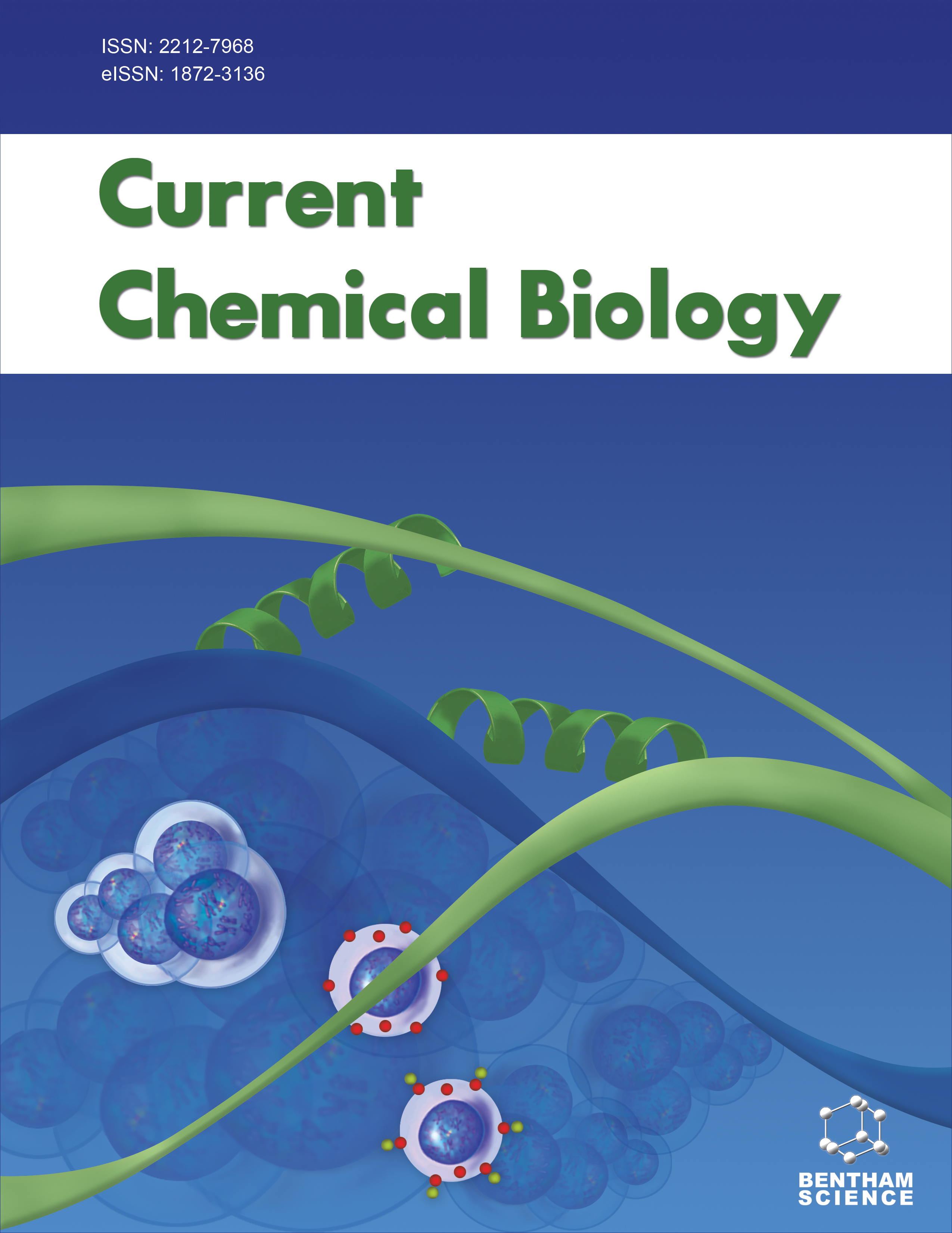- Home
- A-Z Publications
- Current Chemical Biology
- Previous Issues
- Volume 7, Issue 3, 2013
Current Chemical Biology - Volume 7, Issue 3, 2013
Volume 7, Issue 3, 2013
-
-
Simulating the Bacterial Chemotaxis Pathway at High Spatio-temporal Detail
More LessAuthors: Sven Sewitz and Karen LipkowWe have used the Smoldyn software to create spatially detailed models of the Escherichia coli chemotaxis pathway. With it we can follow signalling reactions at high spatio-temporal resolution, observe the formation of gradients of phospho-proteins as well as total protein and analyse the effects of macromolecular crowding on signalling. It has enabled us to propose new regulatory elements of the signalling pathway, which are m Read More
-
-
-
Combining Theory and Experiments to Understand Sugar Regulation in Bacteria
More LessAuthors: Szabolcs Semsey and Sandeep KrishnaIn this review we discuss the interaction between experiments and theory in understanding regulatory systems in bacterial cells, using the galactose network of E. coli as a model system to illustrate this. Initially, experiments led to a coarse-grained network view of this system, which revealed the structure of entangled negative and positive feedback loops that regulates galactose metabolism. A dynamical model, bas Read More
-
-
-
Computational Prediction of Domain-domain Interactions: Factor-graph Based Modelling and Inference
More LessAuthors: Mudassar Iqbal, T. Charlie Hodgman and Dov J. StekelProteins interact with each other to perform an array of cellular functions. A systems-level knowledge of protein interaction networks, as well as the underlying domain-domain interactions, constitutes a major goal in systems biology. In this mini-review, we discuss some background to the problem of inference of domain-domain interactions and briefly discuss some relevant computational and statistical approaches. Specifi Read More
-
-
-
Effects of Agkistrodon halys Metalloproteinase in vitro and in vivo
More LessAuthors: Ramar P. Samy, Gautam Sethi, Vincent T.K. Chow and Bradley G. StilesSnake venom contains a number of different, pharmacologically-active proteins and peptides. Most of the haemorrhagic proteins of snake venoms are metalloproteinases. Agkistrodon halys metalloproteinase (AHM) was isolated from the snake venom of Pallas (Mol wt. 23145). In vitro toxicological effects of AHM (0.1-2 mM) on human macrophages (THP-1 and U-937), lung fibroblasts (MRC-5) and murine lung epithelial ( Read More
-
-
-
Ghrelin Receptor Ligands: Design and Synthesis of Pseudopeptides and Peptidomimetics
More LessAuthors: Aline Moulin, Luc Brunel, Pascal Verdie, Laurent Gavara, Jean Martinez and Jean-Alain FehrentzMainly synthesized in the stomach, ghrelin is a peptide hormone which stimulates growth hormone secretion and appetite, thus promoting food intake and body-weight gain. Historically, researchers started to work on the discovery of ghrelin receptor ligands several years before the discovery of the ghrelin receptor and the hormone itself. Indeed peptides able to stimulate growth hormone secretion (growth hormone Read More
-
-
-
Multifaceted Approach to Circadian Rhythm: Redox, Oxidative Stress, Melatonin, Antioxidants, Nitric Oxide, Hypoxia, Anesthetics, Cortisol and Cocaine
More LessAuthors: Peter Kovacic and Ratnasamy SomanathanThere is a vast literature dealing with various aspects of the circadian clock. This review provides examples of the multifaceted nature, of namely redox, oxidative stress, melatonin, antioxidants, nitric oxide, hypoxia, anesthetics, cortisol and cocaine. The redox and oxidative stress features reflect the involvement of electron transfer and radical species, which can exert either beneficial or deleterious effects. The harmful asp Read More
-
-
-
Glucose Transport and Metabolism in Sertoli Cell: Relevance for Male Fertility
More LessSertoli cells (SCs) are essential for the testis functional development and hence for the expression of male phenotype. They provide a unique and protected environment in testis, within the seminiferous tubules, necessary for the successful progression of germ cells into fully competent spermatozoa. SC has the ability to metabolize various substrates, but preferentially uses glucose that is converted to pyruvate and lacta Read More
-
Volumes & issues
Most Read This Month
Article
content/journals/ccb
Journal
10
5
false
en


